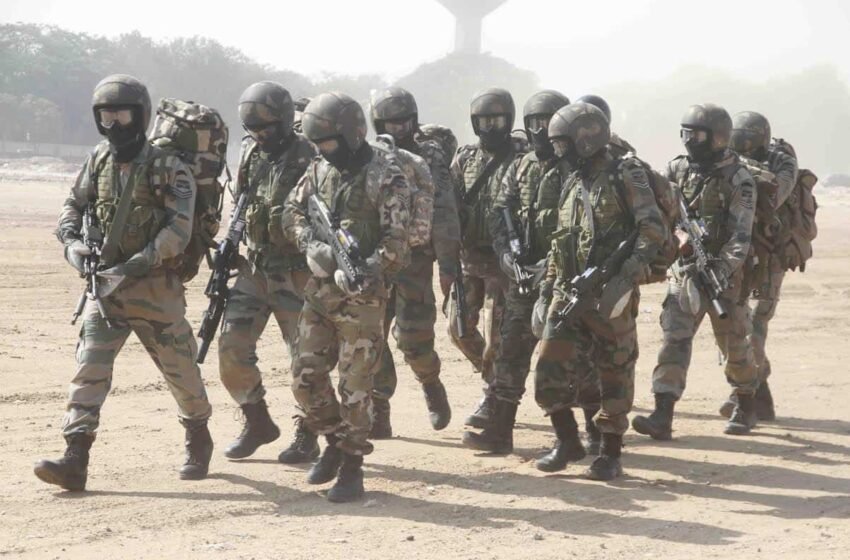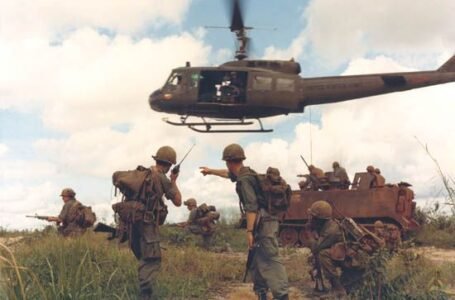Special Frontier Force (SFF): The Covert Tibetan Warriors of India

-Khirabdhi Tanaya Gour
Hidden in the high mountains and veiled in secrecy, the Special Frontier Force (SFF)—often called India’s covert Tibetan warriors—has played a crucial but largely unsung role in the nation’s strategic operations since the 1960s. Formed in the shadows of international politics and operating on the frontlines of the world’s most treacherous terrains, the SFF is a unique blend of Tibetan refugees and Indian intelligence expertise.
This blog explores the origin, evolution, operations, and notable figures of this mysterious paramilitary force that serves as one of India’s silent but most potent weapons in high-altitude warfare and covert operations.
Origin of the Special Frontier Force: A Legacy of Tibet’s Struggle
The Special Frontier Force (SFF) was formed in November 1962, shortly after the Sino-Indian War, which exposed India’s vulnerability in high-altitude warfare against China’s People’s Liberation Army (PLA). The concept of SFF was a joint initiative between India’s Intelligence Bureau, later Research and Analysis Wing (R&AW), and the CIA of the United States.
Why Tibetans?
The force was composed predominantly of Tibetan refugees who had fled their homeland after China’s occupation of Tibet in 1950 and the subsequent failed uprising in 1959. Many of these refugees harbored deep resentment toward China, making them ideal recruits for a guerrilla-style unit trained for operations behind enemy lines.
Training and Structure of SFF
Code Name: Establishment 22
The SFF was initially named Establishment 22 after its first Inspector General, Major General Sujan Singh Uban, a former artillery officer of the Indian Army who played a key role in shaping the unit’s guerrilla warfare tactics. The name has stuck as a popular pseudonym for the force.
Training & Equipment
- Trained in guerrilla warfare, sabotage, reconnaissance, and high-altitude combat.
- Equipped with advanced communication tools and weapons suitable for mountain warfare.
- Operated under the administrative control of R&AW and later the Directorate General of Security (DGS) within the Cabinet Secretariat.
Though not officially part of the Indian Army, SFF units often work closely with the army and are led by Indian Army officers.
Notable Operations and Wars Involving SFF
Despite its covert nature, the SFF has participated in several significant military operations and conflicts.
1. Indo-Pakistani War of 1971 – Operation Eagle
Perhaps the most high-profile engagement of the SFF was during the 1971 Bangladesh Liberation War.
- The SFF, under Operation Eagle, conducted deep penetration strikes in Chittagong Hill Tracts in East Pakistan.
- They disrupted Pakistani supply lines, ambushed enemy convoys, and established control over key territories.
- SFF casualties were high—around 56 soldiers were martyred—but their efforts were instrumental in India’s swift victory in the east.
2. Operation Bluestar (1984)
A small number of SFF commandos were reportedly used during Operation Bluestar, the controversial mission to flush out militants from the Golden Temple in Amritsar. Their involvement remains largely classified.
3. Kargil War (1999)
While the Indian Army led most of the operations during the Kargil War, the SFF played a reconnaissance and support role, given their expertise in high-altitude terrain and behind-the-lines movement.
4. Doklam Standoff (2017)
Though never officially acknowledged, reports suggest SFF units were deployed during the Doklam standoff between India and China to monitor Chinese movements and support Indian troops in the region.
5. 2020 Galwan and Pangong Tso Operations
The most recent and most public exposure of the SFF came during the India-China border tensions in Ladakh in 2020.
- In August 2020, SFF commandos carried out a daring operation to capture strategic heights on the south bank of Pangong Tso lake.
- One soldier, Nyima Tenzin, was martyred, and his funeral became a rare moment of public acknowledgment of the SFF’s contributions.
- This was a turning point, bringing attention to the force’s strategic value and the continued loyalty of Tibetan fighters.
Notable Officers and Commanders
Major General Sujan Singh Uban
- First Inspector General of the SFF and often referred to as the founding father of the unit.
- He was instrumental in creating the culture, training systems, and ethos of the force.
- His leadership during the 1971 war earned him national acclaim, though much of his work remains classified.
Brigadier (Retd) Tsering Norbu
- One of the few Tibetan officers to rise to a senior rank within the SFF.
- Known for leading several successful covert missions along the LAC.
- A symbol of Tibetan excellence and leadership within Indian military structures.
Nyima Tenzin (Martyred 2020)
- A senior NCO whose sacrifice brought the SFF into the national spotlight.
- His martyrdom was publicly honored, a rare acknowledgment for a unit typically kept out of media attention.
SFF Today: Relevance in Modern Warfare
The SFF remains a vital strategic asset for India, especially in the context of:
- High-altitude border disputes with China
- Covert reconnaissance and surveillance missions
- Supporting special operations and hybrid warfare
The force, with a strength of around 3,000–5,000 troops, is divided into Special Groups (SGs) that can be rapidly deployed to conflict zones.
Unique Features
- Operates in extreme secrecy.
- Not governed by the Army Act, giving it operational flexibility.
- Loyalty is driven by ideology and the shared goal of countering Chinese expansionism.
Conclusion: The Silent Sentinels of the Himalayas
The Special Frontier Force is more than a military unit—it’s a symbol of resistance, resilience, and rare courage. Comprising displaced Tibetan warriors fighting for a homeland they may never reclaim, the SFF serves India with unparalleled commitment and secrecy. As geopolitical tensions continue to simmer across the Himalayas, these covert warriors remain India’s hidden blade—sharp, silent, and always ready.


